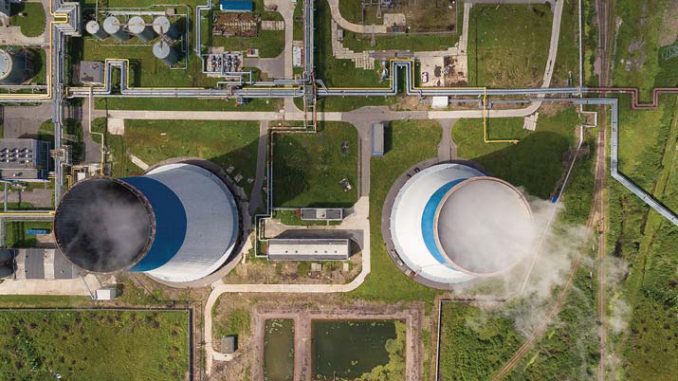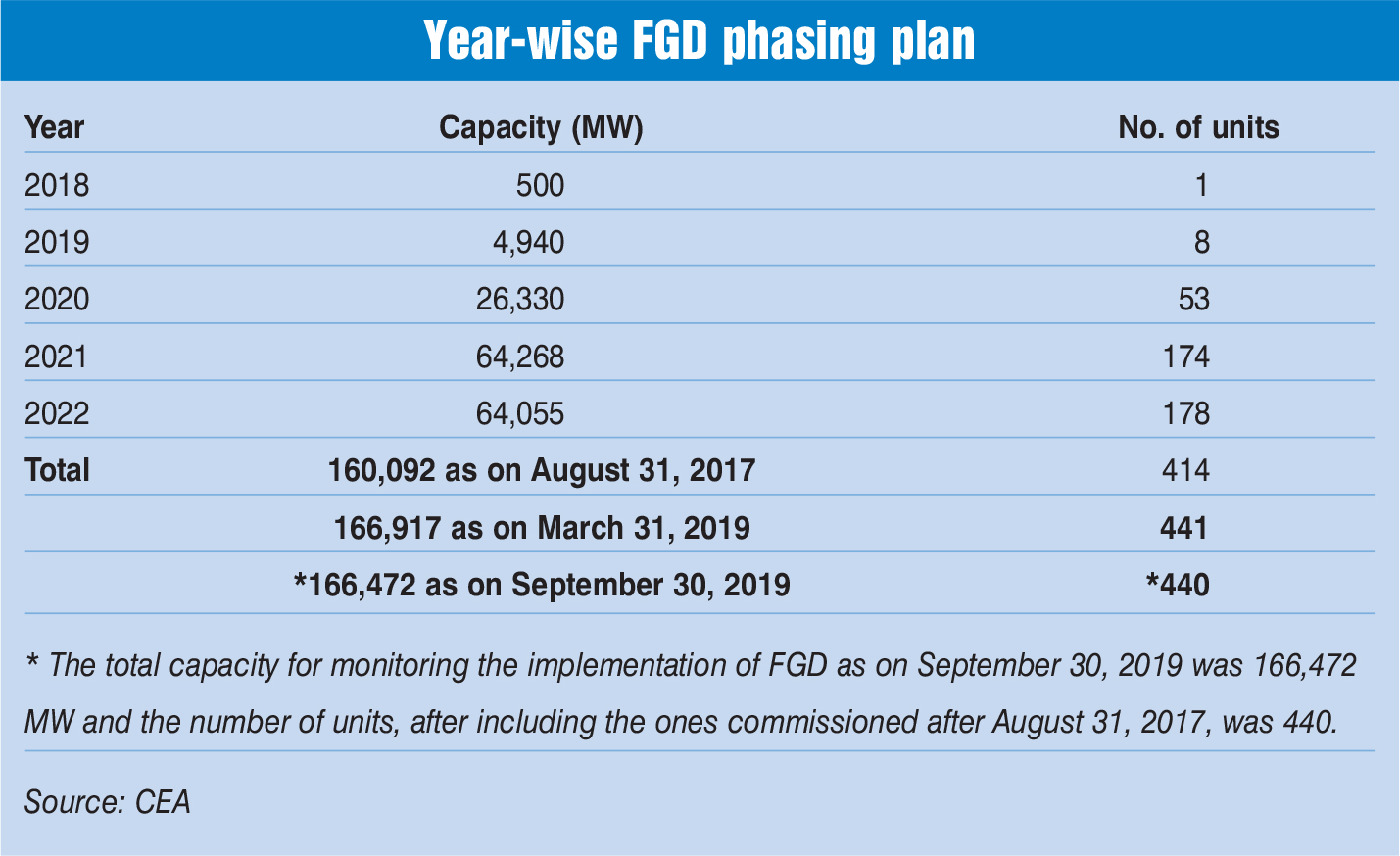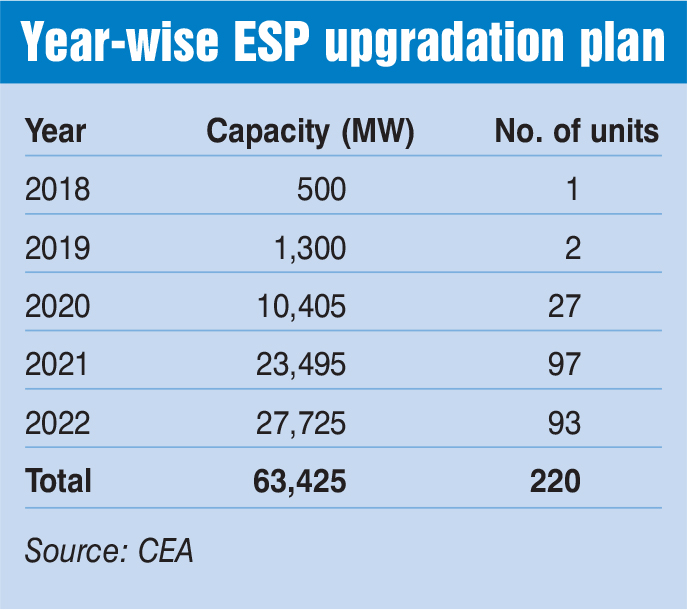
Renovation and modernisation (R&M) has many benefits. It is not limited to plant life extension, and may be undertaken even before plants have completed their useful life of 25 years. In addition to providing additional generation from existing units at low cost and in a short period, R&M can help meet stringent environment norms, restore lost capacity, and improve performance indices of the plant and equipment for flexibilisation.
R&M for flexibilisation
The need to operate power plants more flexibly has been widely recognised by power sector stakeholders. India has set an ambitious goal to install 175 GW of renewable capacity by 2022. Hence, the flexible operation of thermal power plants is required to balance the variability and intermittency of renewable energy generation. According to a report by the Central Electricity Authority (CEA), preparing a coal-fired unit for flexible operation would require measures at all levels, operations and maintenance (O&M), R&M and administration.
These include raising awareness about flexibilisation and its commercial impact. Further, optimising the instrumentation and control system is the most cost-effective way to enhance power plant flexibility, such as precise steam temperature control. The optimisation of control loops, which include coal supply, drum level and air control, is another basic requirement. To meet these requirements, a plant could also install condition monitoring systems, undertake condensate throttling, deploy mill schedulers, etc. It would also require modifications for low load operation/high ramping.
Apart from this, plants need to implement mitigation measures to manage the consequences of flexible/cyclic operation. These include the reassessment of all O&M procedures, with a special focus on water and steam quality, preservation and lay-up procedures, and maintenance strategies. Reliable flame detection for individual burners, transparency regarding the coal quality and composition, optimisation of air flow management, operation with a limited number of mills, and operation of the boiler protection system at low load are some of the other requirements.
In order to ensure fast and efficient start-up, plant operators should check start-up-related temperature measurements and replace the measuring equipment if required. Plants should improve the efficiency at part load and adopt a dynamic behaviour with measures such as optimisation of the water-steam cycle and improvement in the performance of important equipment and components, such as feed water pumps.
Further, all processes are required to be automated, including start-up of fans and pumps, mill operation, steam temperature control and flue gas temperature control. Since each unit has a different plant layout, equipment design and efficiency in terms of operation practices and the general condition of the machinery, a test run should be conducted before any intervention is made. Pilot tests for flexibilisation at some central and state power generation stations are underway/completed. These include NTPC’s Dadri plant, Mauda and Vindhyachal super thermal power stations (TPS); UPRVUNL’s Anpara-B TPS; and WBSEDCL’s Sagardighi TPS.
 R&M for meeting emission norms
R&M for meeting emission norms
In December 2015, the Ministry of Environment, Forest and Climate Change notified and revised the norms for thermal power plant emissions, including particulate matter, sulphur oxides and nitrogen oxides.
Earlier, the R&M needs for meeting the environmental norms were limited to the upgradation of electrostatic precipitators (ESPs). With the help of an electric charge, ESP removes impurities such as solid particles and droplets from air or other flue gases. However, with these new norms, power plants are required to install/retrofit various technology solutions such as flue gas desulphurisation (FGD) systems for removing SOx from exhaust flue gases and selective non-catalytic reduction (SNCR) and selective catalytic reduction (SCR) systems for combustion optimisation/modification of units to meet the NOx norms.
In addition, power plants are required to lower their water usage. This involves moving from once-through cooling, which consumes around 200 m3 per MWh of water and the water drawn is used for only one round of cooling, to cooling towers (CTs), which require 3.5 m3 per MWh and where the same water can be used in cycles.
Based on CEA’s analysis, FGD upgrades will be required for over 166 GW of capacity across 440 units by 2022, with the installation commencing from 2018 onwards. For units within a radius of 300 km from Delhi NCR (12,790 MW of capacity across 33 units), the target date to meet the new environmental norms is December 2019. For units with 500 MW and above installed capacity located in critically polluted areas or those with a population density of more than 400 persons per square km (104 units aggregating 56,810 MW), the target date for meeting the norms is December 2021. As of September 2019, FGDs were commissioned in two units with an aggregate capacity of 1,320 MW. Meanwhile, ESP upgrades would be required in 63 GW of projects across 220 units.
Challenges and the way forward
To meet these emerging requirements, there are some challenges that need to be addressed. For instance, delays in approval and difficulties in obtaining funds from financial institutions for retrofitting existing power plants listed under NPAs/ stressed assets have impacted the R&M work related to emission control equipment. According to the CEA, the capex for wet type FGD varies from Rs 3 million per MW to Rs 6 million per MW, depending on the location, type of units, coal quality, age of units, etc. The availability of only a handful of technology suppliers/ sub-vendors and EPC contractors is also a concern. Further, for ESP upgradation/augmentation, the units have to be shut down for four to six months.
Further, globally available SCR systems for NOx control are not effective for Indian coal having high ash content. Also, SCR systems require ammonia as a de-nitrification agent (consumption of about 2,500 tonnes per year for a 500 MW unit). The availability, transportation, handling and storage for such large quantities of hazardous ammonia will have to be managed by plants.
There have been efforts to address these concerns through various initiatives. To ease funding constraints, the Ministry of Power has issued directions to the CERC to consider the costs related to the implementation of the new environmental norms under change in law provisions. To expedite this process, the CEA is suggesting technologies to IPPs on a case-by-case basis depending on various factors such as unit capacity, plant load factor, configuration, heat rate, gross calorific value, sulphur content in coal, fuel consumption, vintage of the unit, use of reagents, by-product disposal, location of the plant and opex requirement.
Going forward, the contribution of renewables to India’s energy mix is expected to increase significantly over the next decade. However, power generated by renewables is generally fluctuating. For instance, solar power plants only remain operational during the daytime while wind farms do not receive uniform breeze every day. Thus, renewables require storage devices to help regulate their power flow. It is here that coal-powered units are expected to play a balancing role and provide stable yet clean power to the grid. It is equally critical to make the thermal power plants more environmental friendly by ensuring compliance with pollution control norms.
Net, net, R&M will be needed to help power plants adapt to the emerging requirements. Combined policy, regulatory and industry efforts will be needed for faster commencement of R&M works.
